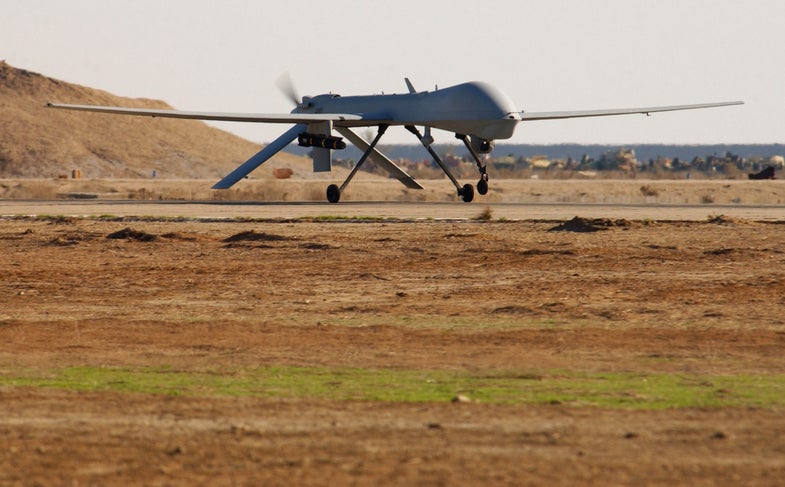ISIS And America Both Lost Drones This Week
That's about the only thing they have in common

Yesterday, the United States lost a Predator drone that was operating over Syria. Today, the American military’s Central Command noted that the U.S. destroyed several ISIS targets, including a remotely piloted aircraft near Fallujah.
The MQ-1 Predator is probably the most iconic drone in the military. A matchstick with wings, a pair of missiles, and a camera slung underneath, the Predator is made for flying in “uncontested airspace”–that is, in places where they won’t get shot down. The counter-insurgency warfare in Iraq and Afghanistan lends itself to drones like this, where slow planes with long flight times can surveil for bomb-placers or armed men not wearing uniforms. Simple anti-air weapons can shoot down drones if they’re flying low enough. Before its civil war began, Syria stockpiled Cold War-era Soviet anti-air missiles, like the SA-3 GOA which might have shot down the Predator, and Russia continued selling Syria new missiles after war broke out.
ISIS’s drone, by contrast, is no armed sentinel. A military spokesman said it was “a small, unarmed hand-held type of the sort that can be purchased commercially,” and that it could be used for battlefield surveillance. That includes basically any quadcopter or remote-control plane with a camera that can stream video to another device. Hand-held drones are great for troops fighting on the ground, because they give them a safe way to look over the next hill or around the corner without sticking their neck out. The RQ-11 Raven is a hand-tossed scout used by America’s military for that exact purpose, and the Army has thousands of them.
ISIS having a drone signals that they’ve adopted the trappings of modern warfare, but it’s hardly the only signal they’re sending. While anti-air missiles protect the Assad government in Syria, ISIS is digging trenches around the Iraqi city of Mosul in preparation for a potential assault by the tanks and ground troops of the Iraq Security Forces. Drones or no, it’s a tactic far more reminiscent of 1915 than 2015.
